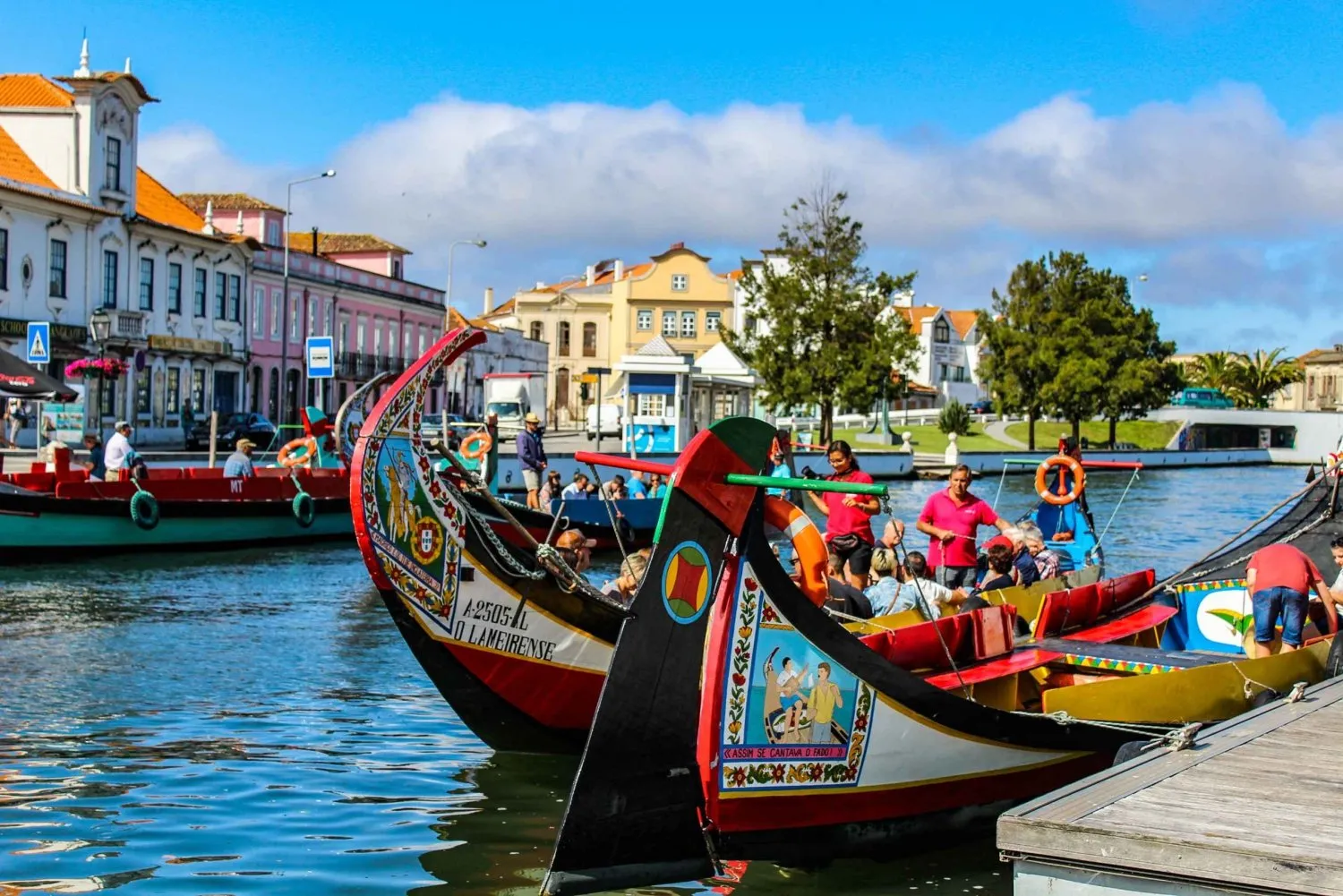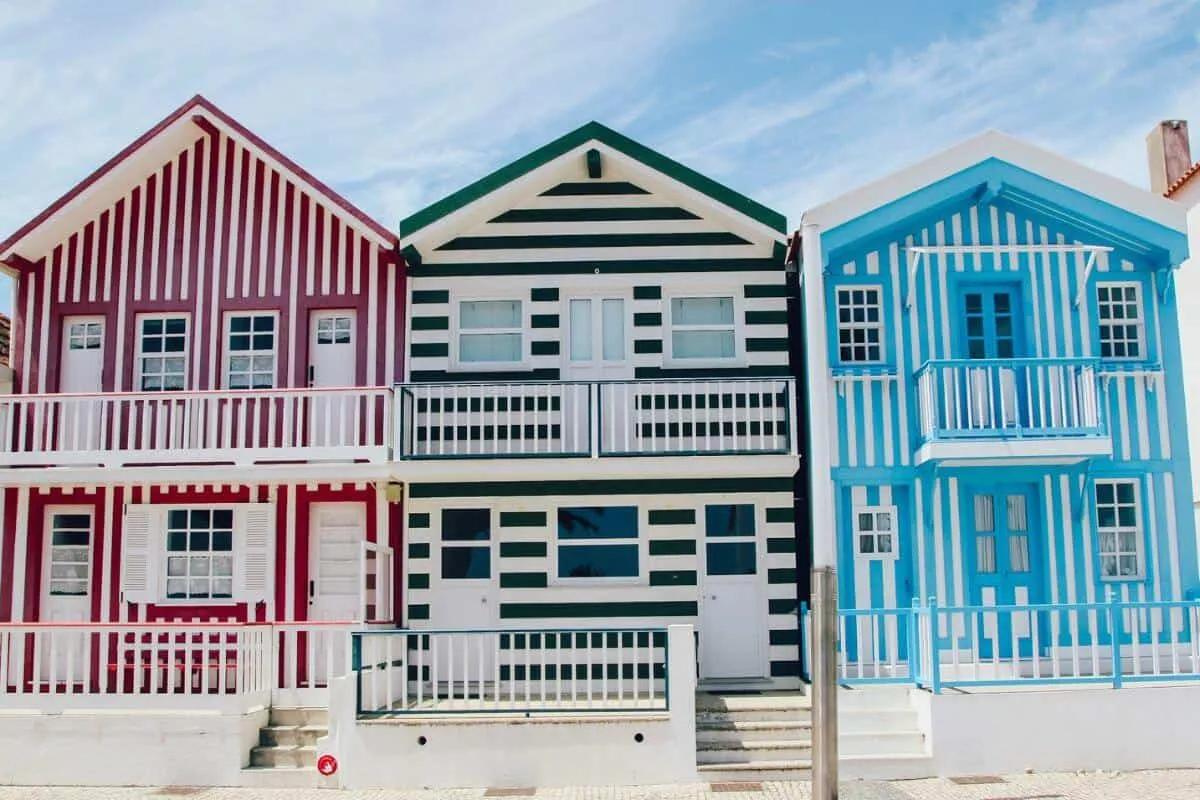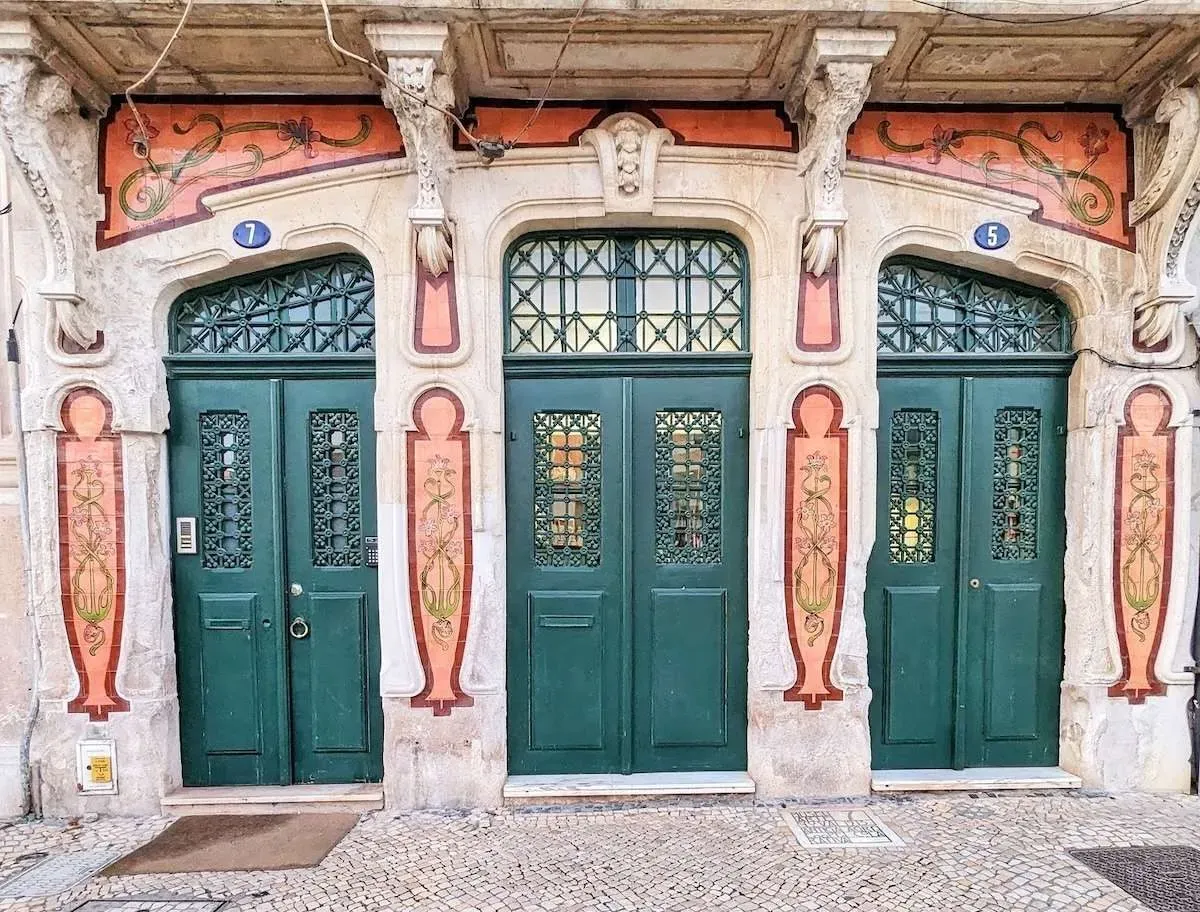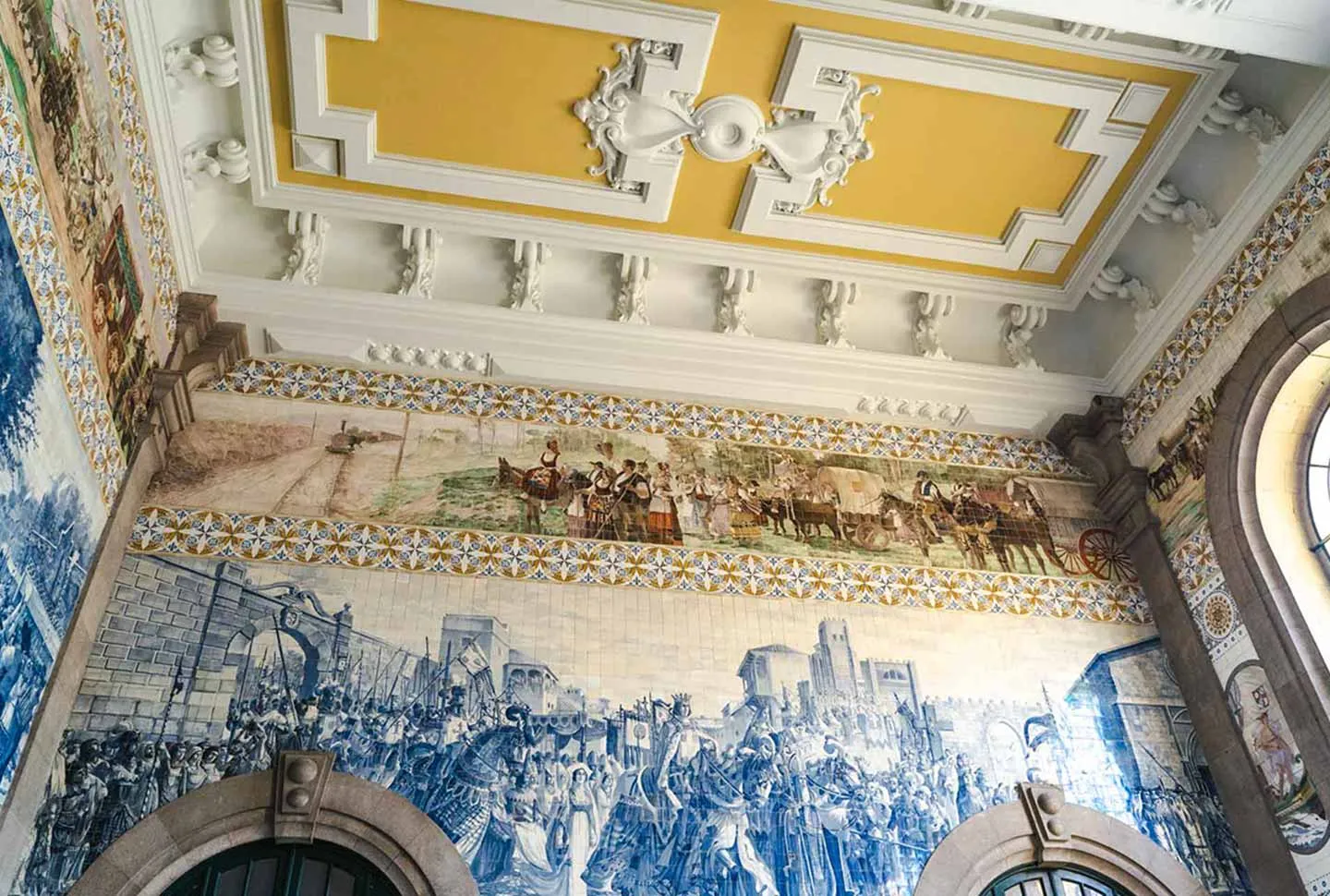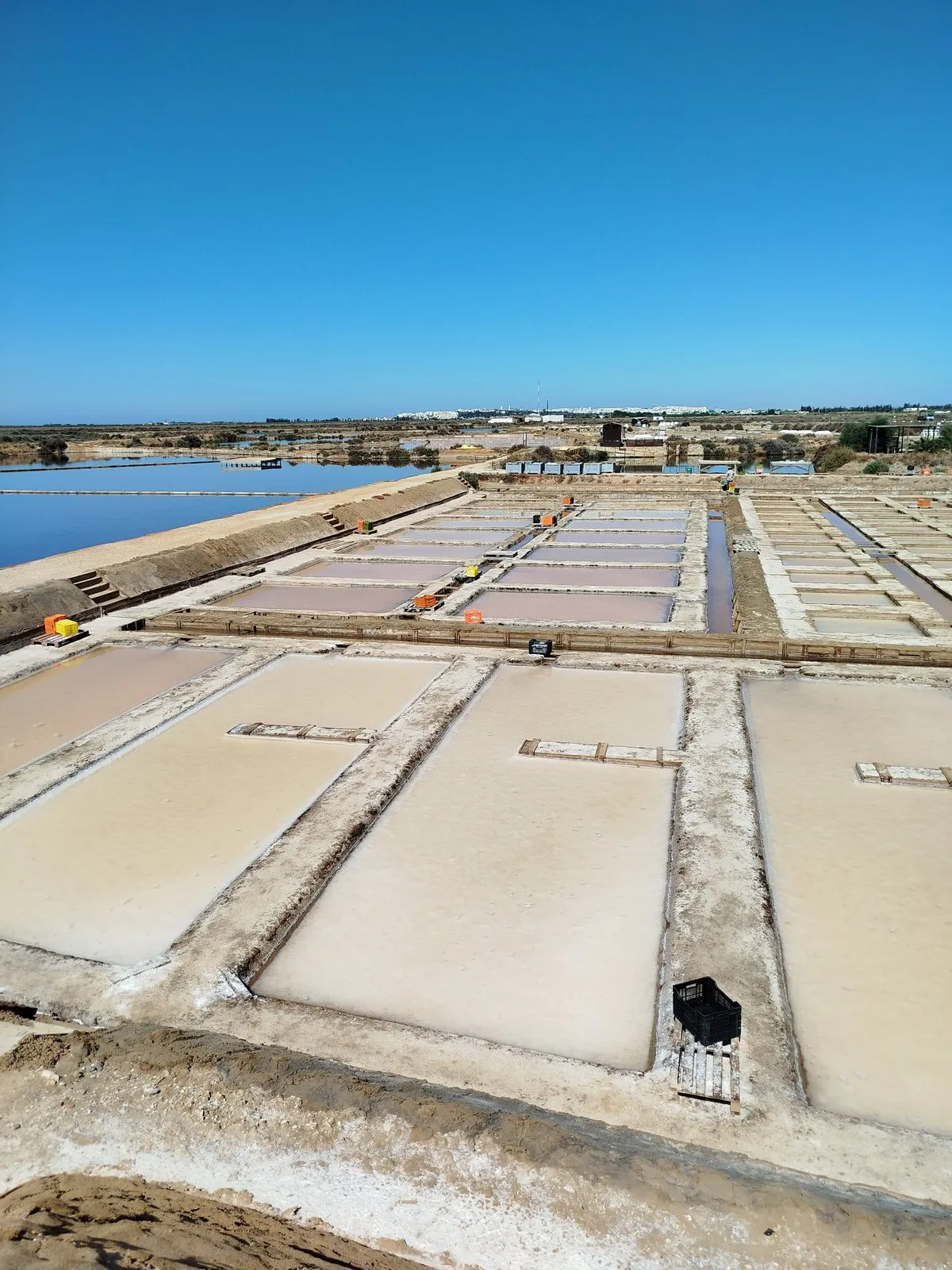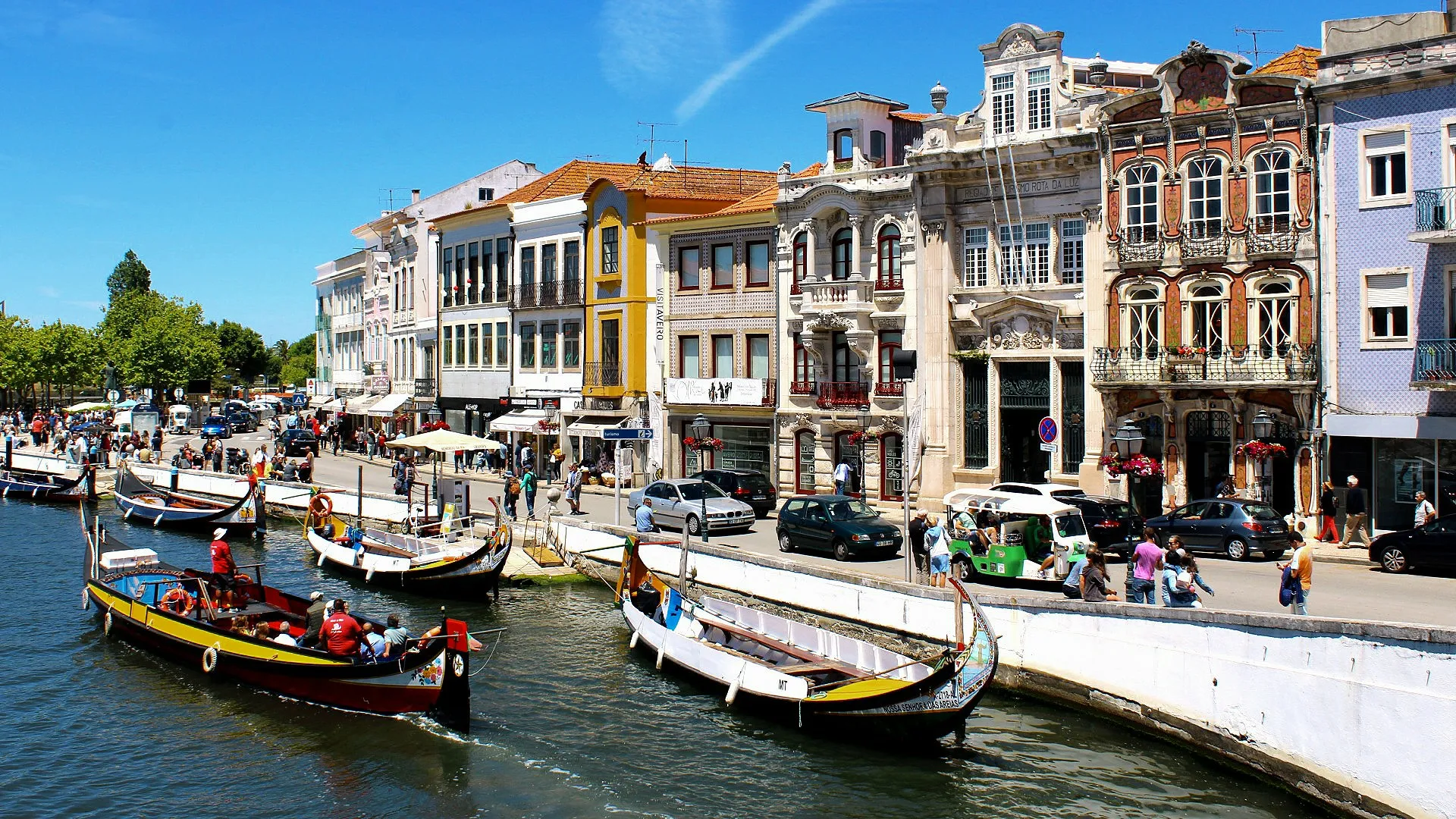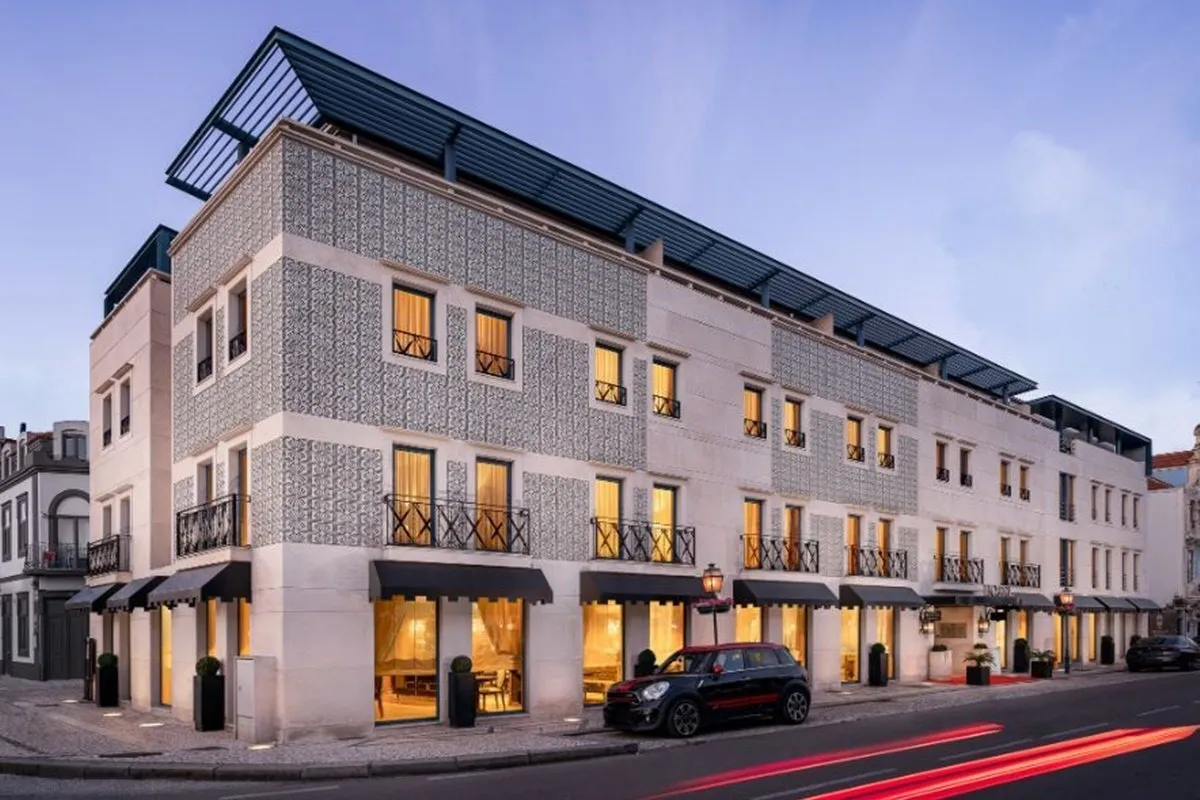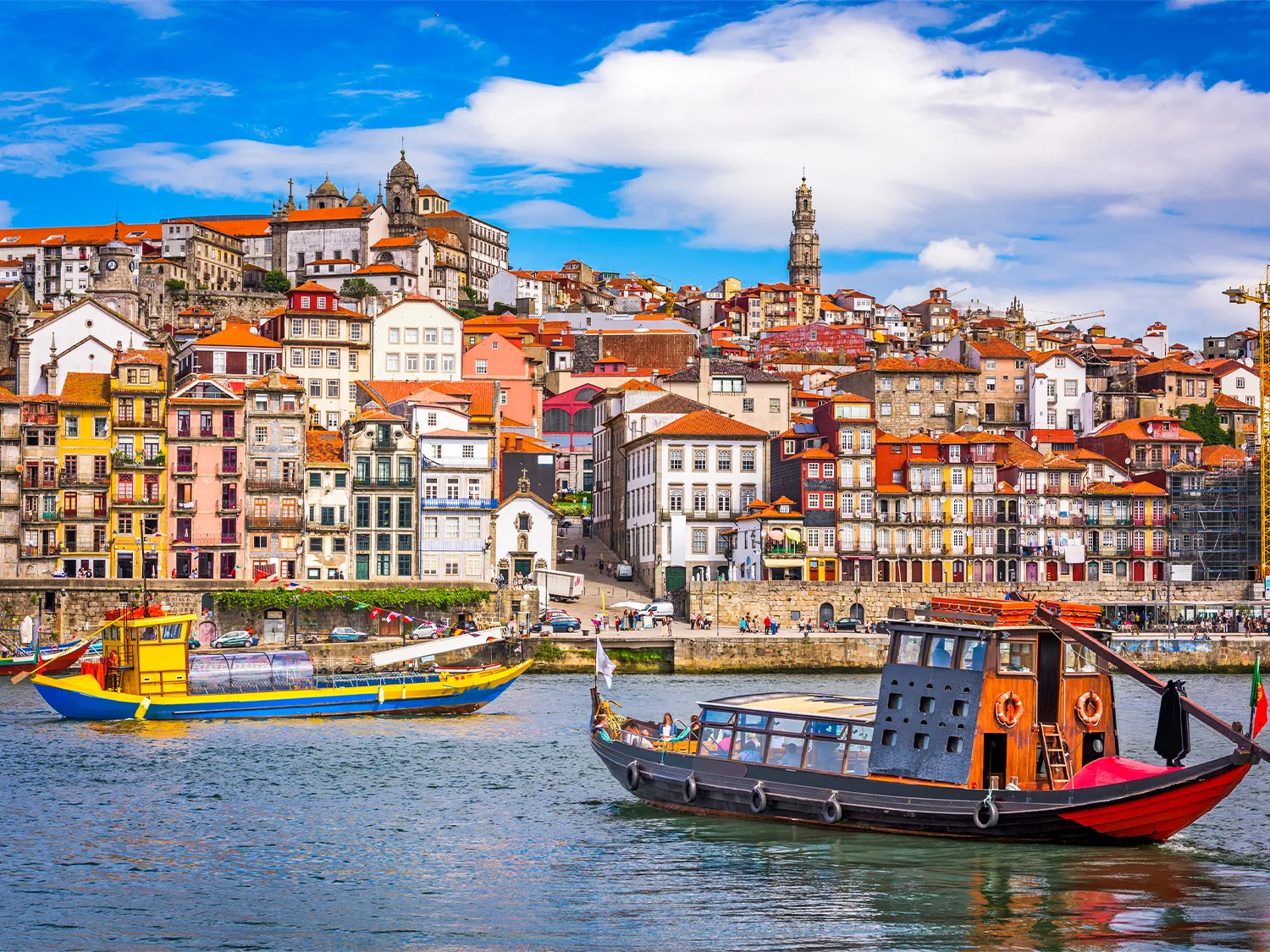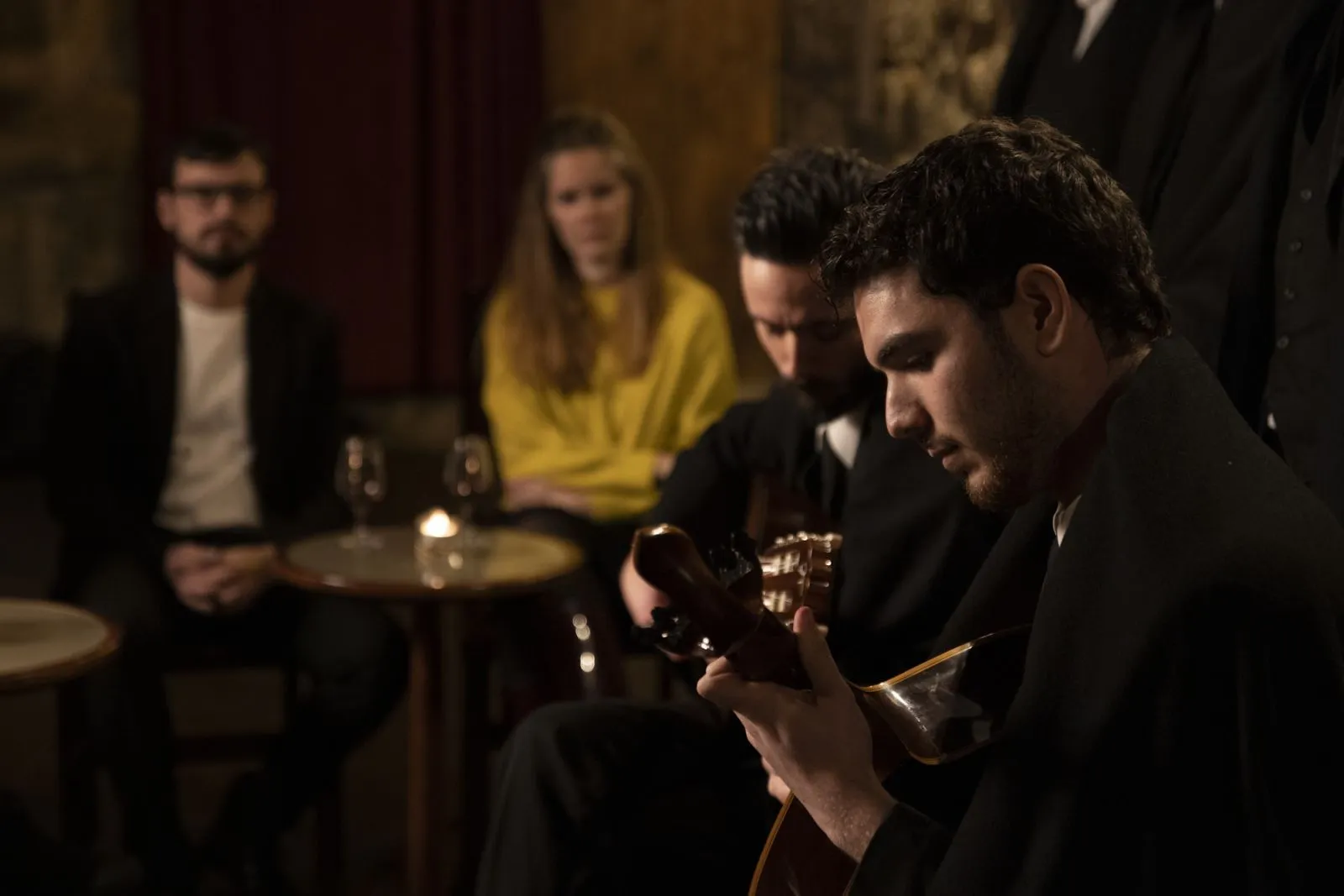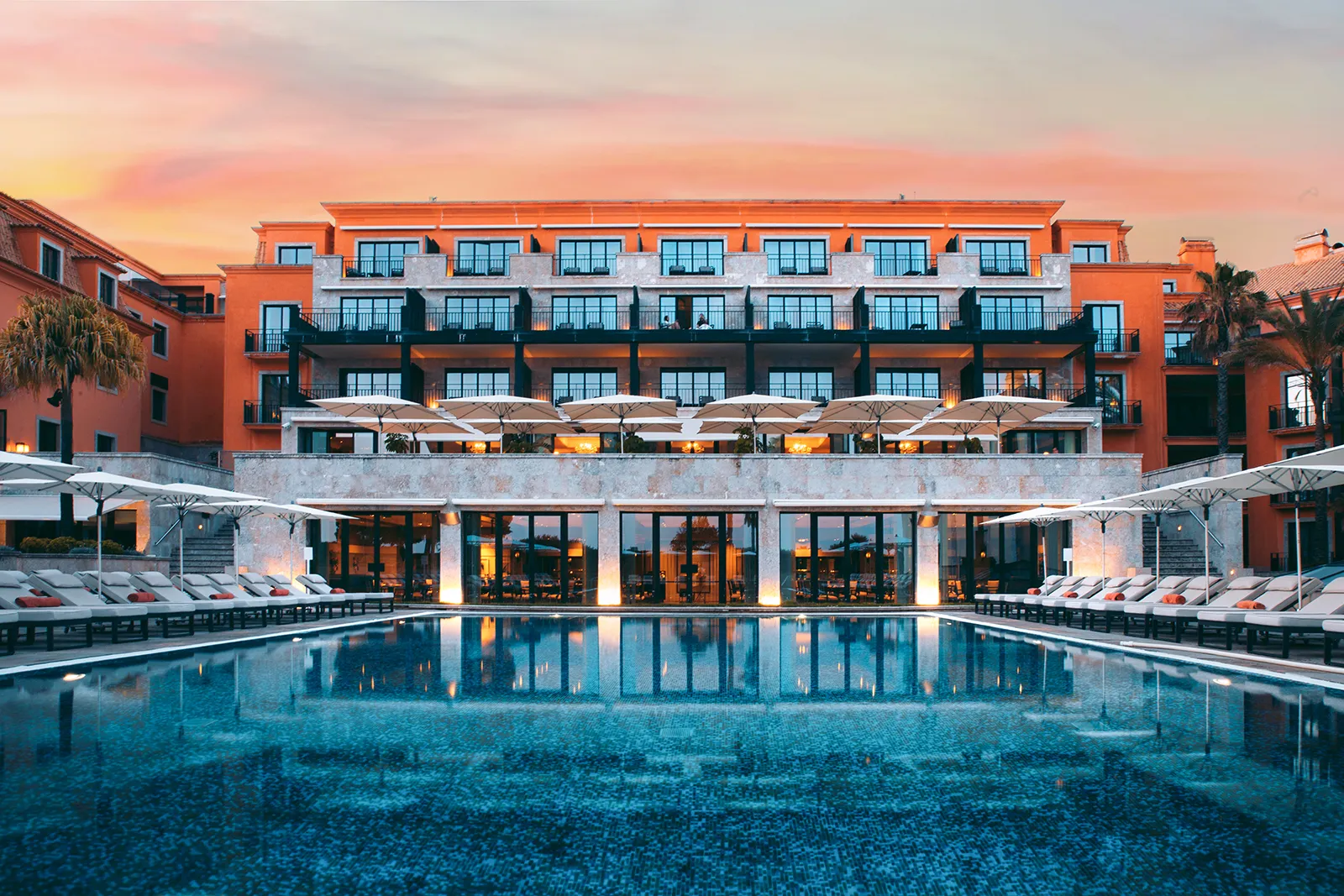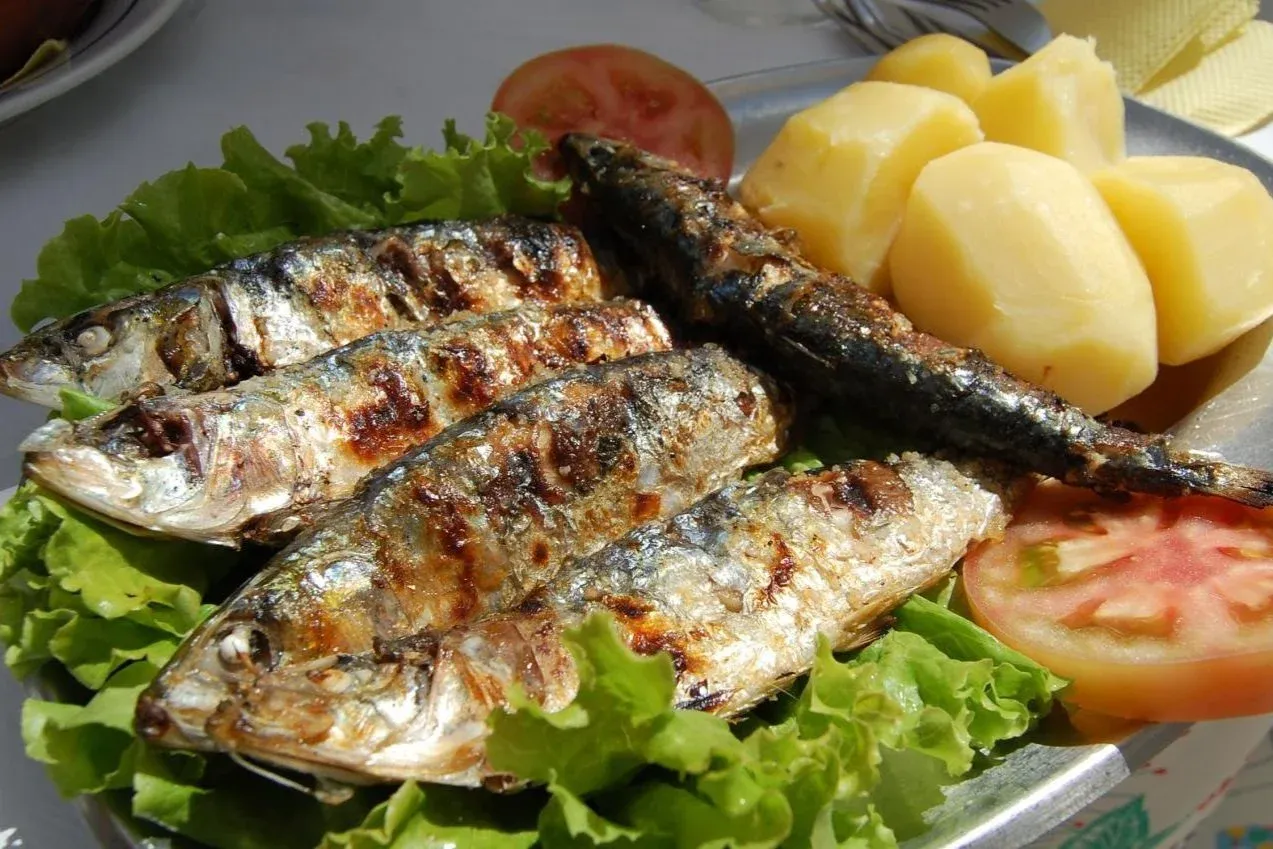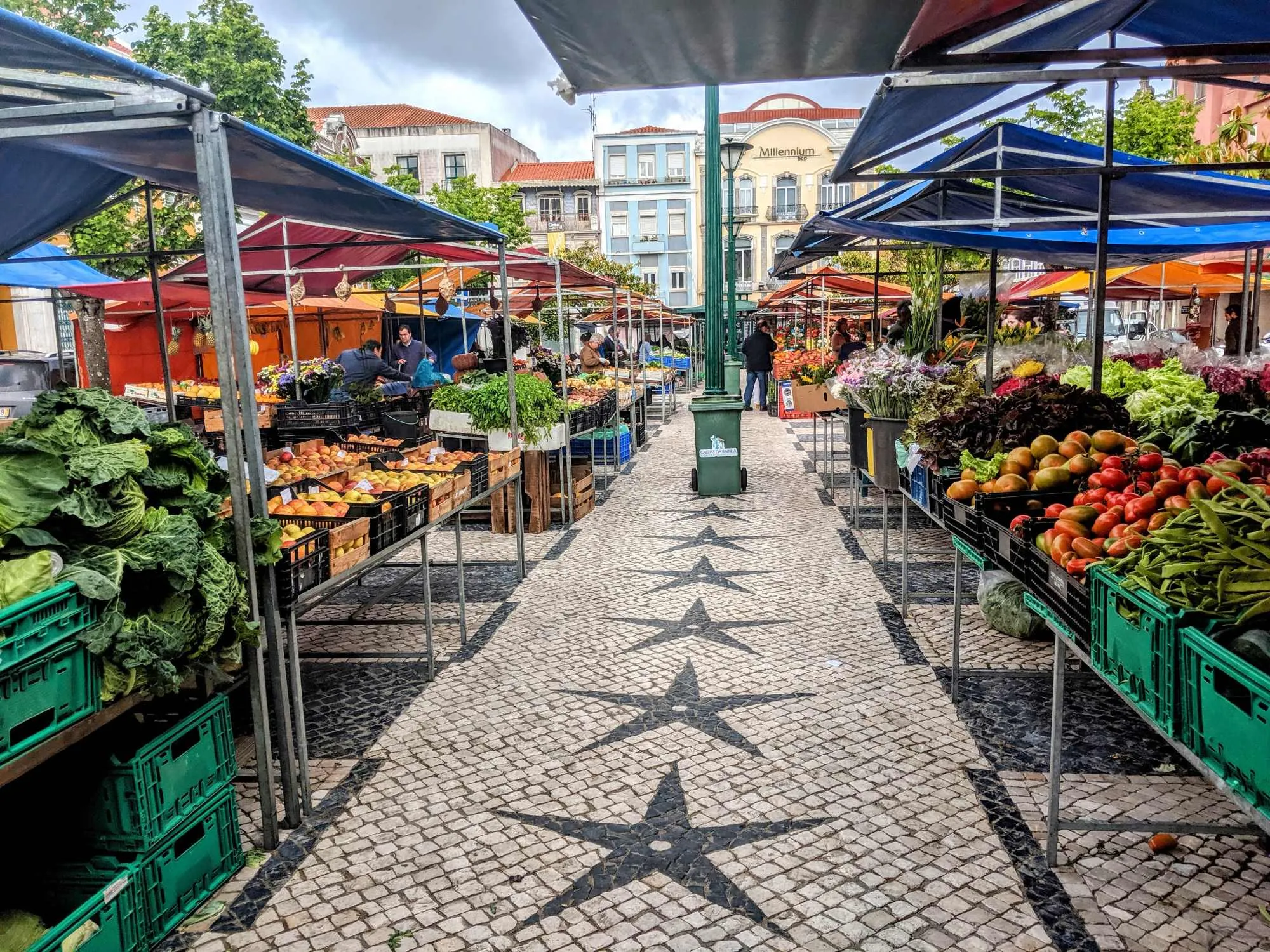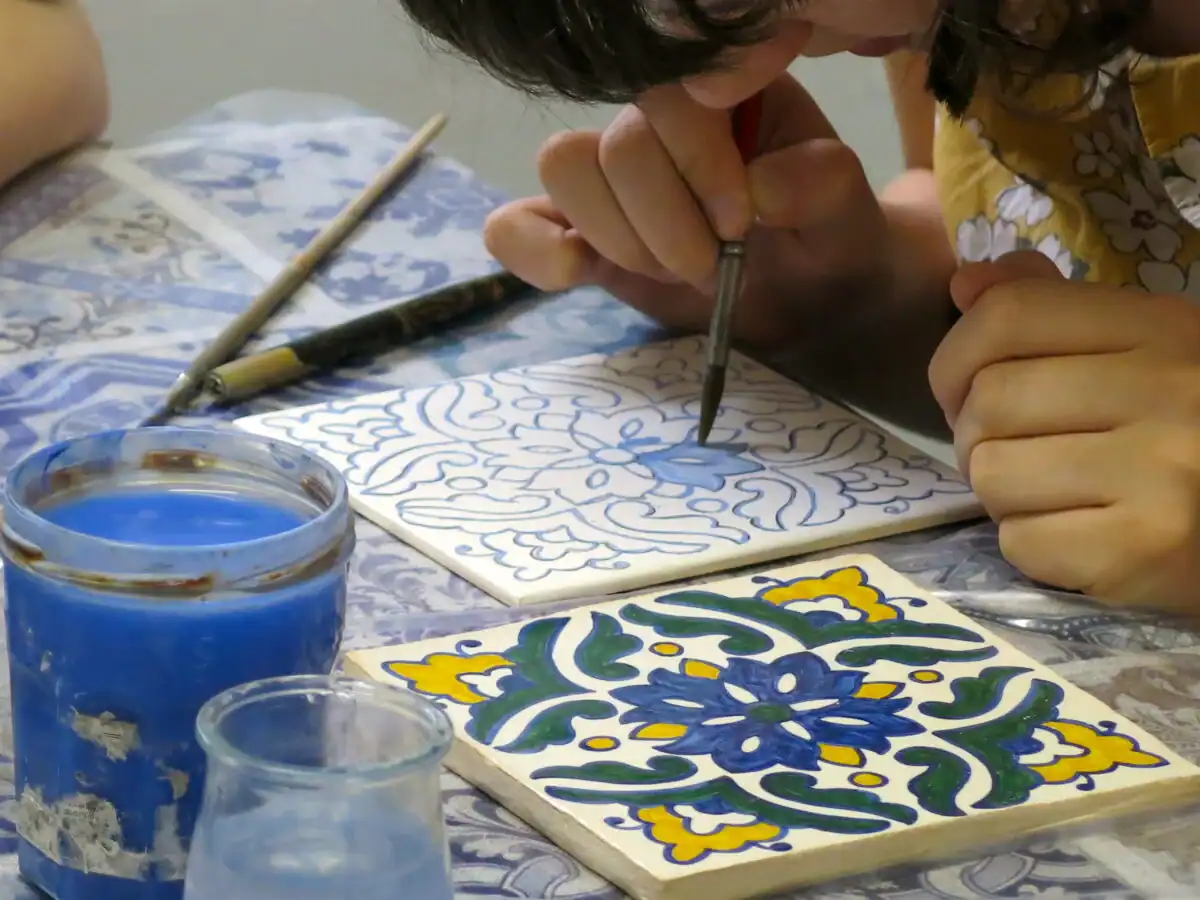Forget the common nickname “Venice of Portugal”—that comparison does this captivating coastal city a major disservice. After spending considerable time exploring Aveiro’s winding canals, sampling its legendary sweets, and discovering its stunning nearby beaches, I can tell you this Portuguese gem has a personality all its own. Located on Portugal’s Silver Coast, Aveiro offers an authentic slice of culture wrapped up in colorful moliceiro boats, Art Nouveau architecture, and some of the country’s most photogenic scenery, all just an hour’s train ride from Porto. This guide covers all the best things to do in Aveiro Portugal for an unforgettable visit.
1. Take a Moliceiro Boat Tour on the Historic Canals
The quintessential Aveiro experience starts with a 45-minute cruise aboard one of the city’s famous moliceiro boats. These slim, colorful vessels weren’t originally designed for tourists; they have a fascinating 19th-century history as seaweed harvesting boats that collected moliço from the lagoon for agricultural fertilizer. Today’s tours offer a relaxing way to see the city’s stunning Art Nouveau architecture from the water while keeping traditional boat-building crafts alive.
What makes this experience special is the intricate artwork on each boat’s four painted panels, which often feature a mix of religious scenes, local life, and surprisingly risqué humor that reflects authentic Portuguese culture. The tours depart from docks along the central canal near Largo do Rossio and typically cost between €14-€18 per adult.
Here’s an insider tip: seek out companies using electric boats instead of diesel-powered ones. The engine noise and fumes from older boats can detract from the peaceful canal experience. While some seasoned travelers might find the tours a bit touristy, the consensus is that it’s both fun and essential for understanding the city’s unique character.
2. See the Striped Houses of Costa Nova
Just a 15-minute drive from Aveiro’s center lies one of Portugal’s most Instagram-worthy spots: the vibrant striped houses of Costa Nova. These aren’t just pretty facades; the palheiros were originally practical fishermen’s warehouses for storing nets and equipment, later converted into charming holiday homes that line the waterfront promenade.
The bold, candy-colored stripes in red, blue, yellow, and green create stunning photo opportunities, especially when reflected in the water. For the best shots, position yourself near the canal to capture both the houses and their mirror images. The nearby expansive Atlantic beach offers another dimension to your visit, perfect for long walks along pristine sand.
Costa Nova can get quite windy even on pleasant days, so be sure to pack layers. The most economical way to reach Costa Nova is via public bus from Aveiro’s Terminal Rodoviário (about 40-50 minutes, €2.60), though a taxi makes the trip in just 15 minutes. Visiting in the late afternoon provides the best golden light for photography.
3. Taste Ovos Moles: Aveiro’s Famous Sweet
No visit to Aveiro is complete without trying ovos moles. I’m not exaggerating when I say this might be one of Europe’s most unique regional specialties. This intensely sweet confection consists of a rich egg yolk cream encased in delicate rice paper shells molded into maritime shapes like seashells, fish, and barrels—a direct nod to the city’s seafaring heritage.
The cultural significance runs deep. This 500-year-old recipe originated with nuns at the Convento de Jesus and became the first Portuguese bakery product granted Protected Geographical Indication (PGI) status by the European Union. That means authentic ovos moles can only be produced in the Aveiro region following strict traditional methods.
For the most authentic experience, visit historic pastry shops like Confeitaria Peixinho (founded in 1856) or M1882. The sweetness is intense, so it’s definitely an acquired taste. Some visitors find it overwhelmingly sweet, while others become completely obsessed. There’s even a 12-meter-tall statue of an ovo mole near the main canal, showing just how seriously Aveiro takes this local treasure.
4. Discover Art Nouveau Architecture on Foot
Aveiro stands as one of Europe’s premier Art Nouveau destinations, a fact many visitors discover completely by accident. In the early 1900s, wealthy Portuguese emigrants returning from Brazil financed ornate buildings in this flourishing European style to showcase their prosperity. The result is a cityscape where elegant curved lines, floral motifs, and intricate ironwork blend seamlessly with traditional Portuguese azulejo tiles.
The self-guided walking tour (free maps are available at the Tourist Office) centers around the stunning Museu de Arte Nova, housed in the Casa do Major Pessoa building. Other notable examples line the main canal and Rua João Mendonça, including the Cooperativa Agrícola building with its beautiful tile panels. The museum doubles as a tea house during the day and transforms into a chic cocktail bar in the evening.
What sets Aveiro’s Art Nouveau apart is how it incorporates distinctly Portuguese elements. However, architecture enthusiasts should note that the collection is relatively small compared to cities like Brussels or Barcelona, making this more of a pleasant discovery than a primary travel motivation.
5. Admire the Azulejo-Covered Train Station
Even before you reach Aveiro’s canals, the old train station (Antiga Estação) provides one of the city’s most impressive sights. This beautifully restored mid-1800s building features a facade covered in magnificent blue and white azulejo panels, functioning as an open-air art gallery that introduces the region’s history and culture.
The hand-painted tiles, mostly completed in 1916, depict vivid scenes of local life: fishermen in their moliceiros, workers harvesting salt in the salinas, women collecting seaweed, and regional landmarks. It’s a visual narrative that perfectly sets the stage for understanding what makes Aveiro special.
Viewing the station is completely free and takes just 15-20 minutes, making it a perfect first or last stop. Photography enthusiasts will find the tile work particularly stunning in the morning or late afternoon light when shadows emphasize its intricate details.
6. Explore the Historic Salt Pans (Salinas)
Salt production has anchored Aveiro’s economy since Roman times, earning it the nickname “white gold” for its crucial role in trade and preserving cod. The historic salt pans (salinas) offer a fascinating glimpse into this heritage, though the experience varies dramatically depending on the timing.
The Ecomuseu Marinha da Troncalhada provides the best educational experience, where you can walk along the ridges and watch traditional salt workers (marnotos) using centuries-old techniques during the harvest season (March-September). Some facilities, like Cale Do Oiro, even offer unique spa experiences with therapeutic salt baths and mud scrubs.
While some visitors find the salt pans underwhelming during midday, they are widely considered stunning at sunset when the shallow water reflects brilliant pink and gold skies. The industrial nature of active salt production might not match everyone’s idea of a romantic spot, but the unique landscape creates dramatic photographic opportunities.
7. Wander the Beira-Mar Fishermen’s Quarter
For an authentic local atmosphere away from the polished main canal area, explore the Bairro de Beira Mar (Fishermen’s Quarter). This characterful neighborhood features cobbled streets, traditional tiled fishermen’s houses, and small squares that showcase Aveiro’s deep-rooted connection to the sea.
The area leads to the bustling Praça do Peixe (Fish Market Square), where a lively fish market operates, surrounded by some of the city’s best seafood restaurants. This is where locals shop and eat, offering a genuine Portuguese atmosphere rather than a tourist-focused one.
The narrow streets can feel a bit maze-like, and some areas show their working-class roots. However, visitors interested in authentic culture and excellent local seafood will find this neighborhood far more rewarding than sticking solely to the main tourist zones.
8. Visit the Museu de Aveiro (Convento de Jesus)
Housed in a magnificent 15th-century Dominican convent, the Museu de Aveiro tells the story of Princess Joana, daughter of King Afonso V, who chose a devout life within these walls. Her stunning baroque marble tomb is the museum’s centerpiece and a masterpiece of Portuguese craftsmanship.
Beyond the royal connection, the convent itself showcases remarkable architecture. The peaceful cloisters and lavishly gilded chapel feature elaborate wood carvings and ceilings covered in gold leaf and intricate paintings. The religious art collection focuses primarily on regional pieces spanning several centuries.
While some visitors may find the museum’s religious focus less engaging, history enthusiasts and those interested in Portuguese art will discover significant cultural depth here.
9. Try Tripa de Aveiro Street Food
While ovos moles grab all the attention, Aveiro’s second local specialty offers a completely different experience. Tripa de Aveiro (the name means “intestine,” but don’t worry!) consists of a thick, soft, slightly undercooked crepe-like dough folded into a rectangle and filled with sweet or savory ingredients.
Popular sweet fillings include chocolate, ovos moles cream, or cinnamon and sugar, while savory options feature ham and cheese. This warm, comforting street food is a perfect afternoon snack and costs just a few euros from beachside kiosks, particularly in Costa Nova.
The texture takes some getting used to—it’s deliberately undercooked compared to typical crepes—and some may find it too doughy. However, locals love tripas, and they provide an authentic taste of everyday Aveiro food culture.
10. Cycle for Free with BUGA Bikes
Aveiro’s flat terrain makes it ideal for cycling, and the municipality encourages this through its BUGA (Bicicleta de Utilização Gratuita de Aveiro) program, which offers free bicycle use. Simply visit a BUGA point, like the one at Manuel Firmino Market, leave your ID as a deposit, and receive a bike and lock for the day (must be returned by 7 PM).
The program is wonderful for exploring beyond the city center and reaching areas like the salt pans without walking fatigue. However, the free bikes are basic models without gears, and availability can be limited during peak tourist season. For longer distances or higher-quality bikes, several private companies offer hourly and daily rentals, including electric bikes.
Best Time to Visit Aveiro
Aveiro’s temperate Mediterranean climate offers distinct advantages depending on your priorities. Peak season (June-August) brings the warmest weather (20°C to 24°C) and events like the Festival of the Canals, but also the largest crowds and highest prices.
The shoulder seasons (April-May and September-October) provide ideal conditions for most visitors, with milder temperatures, fewer crowds, and a high probability of sunny days perfect for outdoor exploration. These months offer the sweet spot for photography and comfortable walking.
Off-season visits (November-February) mean colder, wetter conditions. However, you’ll experience the city without crowds and can witness unique local events like January’s São Gonçalinho festivities.
How to Get to Aveiro
Aveiro’s location as a major transport hub makes it easily accessible from Portugal’s main cities.
- From Porto: The most popular option is the train. Over 20 daily services run from Porto’s Campanhã station, taking about 1 to 1.25 hours and costing between €3.90-€5.35.
- From Lisbon: The fastest option is the Alfa Pendular train (around 2-2.5 hours, €20-€35). The slightly slower Intercidades service (about 2.75 hours, €14-€25) offers better value. Buses from Lisbon take 2.5-3.5 hours and are the most budget-friendly choice.
Within the city, Aveiro’s historic core is flat and compact, making walking the best way to see the central attractions.
Where to Stay in Aveiro
- Luxury: Hotel Moliceiro offers boutique luxury on the central canal, while the 1877 Estrela Palace Hotel provides unique charm in a restored palace with the significant advantage of free parking.
- Mid-Range: The modern Melia Ria Hotel & Spa features a full spa and indoor pool, located a 10-15 minute walk from the center. TURIM Aveiro Palace Hotel occupies an impressive historic building overlooking the main canal.
- Budget: Hotel Imperial boasts an unbeatable central location. For a highly-rated hostel experience, Welcome In – Suites & Hostel offers clean, modern facilities with both private suites and dorms.
What to Eat: A Dining Guide for Aveiro
Aveiro’s culinary scene centers around its maritime heritage. Beyond ovos moles, regional specialties include Caldeirada de Enguias (rich eel stew), fresh fish and shellfish from the Ria de Aveiro, and various cod preparations.
- Fine Dining: Salpoente, recognized by the Michelin Guide, is set in a restored salt warehouse and features innovative cuisine focused on local ingredients. Reservations are essential.
- Traditional Seafood: For an authentic local experience, head to restaurants near the fish market like Maré Cheia or O Telheiro, which are recommended by residents.
- Casual Eats: Locals suggest Augusto for excellent Pregos no pão (steak sandwiches) or Ramona for quality burgers, offering great value and a glimpse into everyday Portuguese food culture.
Planning an Aveiro Day Trip from Porto
Most visitors treat Aveiro as a day trip from Porto, and the logistics work perfectly. A morning train departing Porto around 8-9 AM will have you in Aveiro by 10 AM, providing a full day for exploration.
An ideal day trip combines Aveiro’s city center attractions in the morning (train station, moliceiro tour, Art Nouveau walk, ovos moles tasting) with an afternoon bus trip to Costa Nova for the striped houses and beach. This schedule allows for both cultural exploration and coastal relaxation.
However, a packed day trip doesn’t allow for leisurely meals or extensive museum visits. Those wanting to see the salt pans at sunset or enjoy fine dining might consider an overnight stay in Aveiro Portugal.
Planning a successful visit comes down to managing expectations. Rather than seeking a Portuguese Venice, you’ll discover a place with its own distinctive charm, fascinating maritime history, and beautiful coastal scenery. The compact size becomes an asset for travelers wanting to experience authentic culture without the scale of Lisbon or Porto. Whether you’re drawn by the colorful boats, the legendary sweets, or those photogenic striped houses, Aveiro offers a perfect slice of Portuguese coastal life.
Read more:
